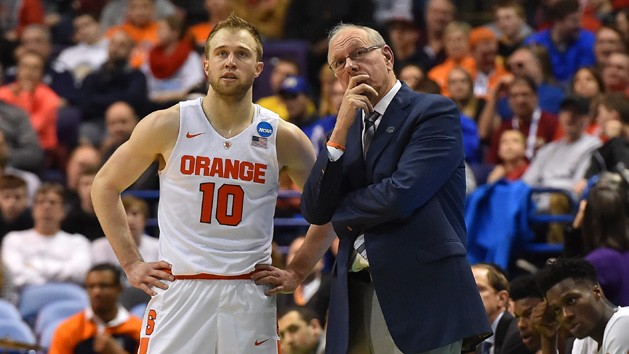
You can’t judge the totality of a conference by play in the NCAA Tournament. There are too many variables such as matchups and teams whose seeds were misconstrued by a selection committee, which is generally devoid of real basketball people. Then there is bad luck flowing in the direction of a conference that has otherwise been tough and competitive all season, in and out of conference (check the Pac-12).
The ACC has managed to clear all of those hurdles and now finds itself with a whopping six teams in the Sweet 16. The structure of the ACC now reminds some of the old Big East, which year-in, year-out from 1979-2013, was the gold standard of college basketball. It was at some points 10 or 11 teams deep while the then over ballyhooed ACC basically was top heavy with Duke and North Carolina as the only factors, while a Maryland or a Wake Forest, for example, might stop in for a quick cup of coffee and then fade away.
That’s not the case anymore with the influx of Big East teams that has made the ACC more than a two-team conference. Syracuse, Notre Dame, Pitt, Louisville and Miami have stirred the soup. Virginia’s hiring of Tony Bennett has made the Cavaliers a national power.
While beating Duke and UNC on a regular basis, these teams have picked up where they left off in the Big East and mounted challenges. One major factor is also the unbalanced schedules of 18 games each which keep the Dukes and North Carolinas of the world from feasting over the Clemsons, Georgia Techs and now Wake Forests twice in one season.
Syracuse is a perfect example of how this competition has manifested itself. The Orange had a tough season with a seemingly impossible task of even making the tournament after coach Jim Boeheim was tweaked by the NCAA for, once again, unprovable offenses. He went into the NCAA’s self-appointed “correction program” with a nine-game ban basically because he doesn’t speak the governing body’s company lines.
As Boeheim rested at home during his nine-game suspension, associate head coach Mike Hopkins took over the ‘Cuse and it struggled to a 4-5 record and from its No. 14 ranking. There were losses to St. John’s, the last place team in the Big East, rival Georgetown, and ACC middling Clemson.
The Orange skidded to a 0-3 start in the league. Then, when Boeheim came back against North Carolina on Jan. 9, Syracuse led the Tar Heels by six with eight minutes to go before collapsing in the clutch as North Carolina won in the final two minutes. This is an Orange team that won eight of nine after that, including a 64-62 eye-opener at Duke.
The Orange hit the refresh button over the weekend in the NCAA Tournament and used the vaunted Boeheim 2-3 zone to knock out Dayton and Middle Tennessee State, which upset second-seed Michigan State on Friday. Boeheim thinks the ACC experience prepped the Orange for another Sweet 16 appearance.
“We struggled in the conference for the most part because we were playing good teams, really good teams and it’s hard to judge a conference during the year: I mean, it is hard,” said Boeheim.
After playing the rigors of the conference schedule, it has done Syracuse good to be able to play against teams that haven’t played the Orange. Dayton, an A-10 co-champion, and Middle Tennessee State had no answers for Boeheim’s zone. However, the MTSU win gave the ‘Cuse a break it needed and the Orange seized a 75-50 win over the Blue Raiders, which shot 56 percent in a 90-81 win over Michigan State.
“We have played like this quite a bit this year,” Boeheim said. “It doesn’t always show up when you’re in the ACC because like the last games we played, three of them were on the road and we can’t beat Pittsburgh. So I mean it doesn’t mean we weren’t good. We just couldn’t win those games. And if you play in a league like ours and you can win nine games and you’ve got some non-conference wins, you’re going to get in the tournament.”
Boeheim was on point as Pitt was the only ACC team to lose over the weekend. The smashing into the Sweet 16 by Syracuse, Virginia, Notre Dame, Miami, North Carolina and Duke showed a renewal of competition which was first magnified in the 34-year run of the Big East.
“You can’t go just by the NCAA Tournament, but I think you have to go a little bit by what conferences do in the tournament,” said Boeheim, “That’s the only thing we have to judge on because during the regular season, they’re just playing within your conference. It’s hard to tell. You’re just proving that you’re good within your conference.”
